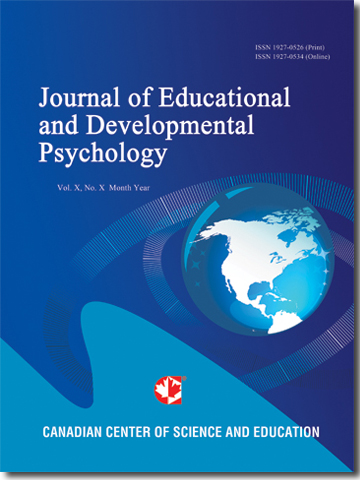Revision and Application of Attitude Scale for Qualitative Research in Psychology among Chinese Undergraduates
- Wuming He
- Jiaxiao Zou
- Mengying Wang
- Xuewen Ye
- Xiuqing Dai
- Qiuju Cai
Abstract
Building on foreign literature about the attitude toward qualitative methods for psychology and combining with our local experience of teaching qualitative methods to psychology students, we revised and validated the original scale of Attitude towards Qualitative Research in Psychology (AQRP), generating Attitude Scale for Qualitative Research in Psychology (ASQRP). The scale was also applied to evaluate the effect of our course on qualitative methods for psychology. Three studies were conducted to explore, revise and validate the scale. In study 1, we translated and revised the original scale with eighteen items from the previous study. In a sample of 311 students enrolled in psychology courses, we surveyed and conducted a confirmatory factor analysis on four dimensions of the original scale. Among them, there was zero correlation between perceived lack of validity and qualitative orientation, while the two dimensions of the original scale were negatively correlated. The results of the fitness index were slightly away from expectations. In study 2, we added six locally adapted items to the scale and surveyed again to gain a sample of 249 psychology students. Exploratory analysis established a three-dimension structure of the Attitude Scale for Qualitative Research in Psychology (ASQPR) containing “perceived lack of validity,” “capturing the lived experience,” and “time- and resource- intensive,” with twenty-two items remaining and the dimension of “qualitative orientation” in the original scale reduced. Correlations between the ASQPR and Knowledge about Qualitative Research Scale and Psychology as a Science Scale showed acceptable validity. In study 3, the ASQPR was applied to assess students’ learning outcomes who took part in the psychological qualitative methods courses for a semester. We used a pretest-posttest design to track the attitude changes in three samples of students (179 in total). After the course, students increased their knowledge about qualitative research and realized the advantages of qualitative approach (i.e., capturing the lived experience) and quantitative approach. They also generally think of qualitative research as time and resource-demanding. However, the ingrained perception of qualitative research as lacking validity remained unchanged. In sum, the current study developed a tool suitable for Chinese students to assess their attitudes towards qualitative research, which can assist in curriculum reform and construction involving teaching qualitative methods.
- Full Text:
 PDF
PDF
- DOI:10.5539/jedp.v12n2p108
Journal Metrics
(The data was calculated based on Google Scholar Citations)
1. Google-based Impact Factor (2021): 1.11
2. h-index (December 2021): 29
3. i10-index (December 2021): 87
4. h5-index (December 2021): N/A
5. h5-median (December 2021): N/A
Index
- Academic Journals Database
- CNKI Scholar
- Copyright Clearance Center
- CrossRef
- Elektronische Zeitschriftenbibliothek (EZB)
- EuroPub Database
- Excellence in Research for Australia (ERA)
- Harvard Library
- Jisc Library Hub Discover
- JournalSeek
- JournalTOCs
- LIVIVO (ZB MED)
- LOCKSS
- MIAR
- Open Access Journals Search Engine(OAJSE)
- PKP Open Archives Harvester
- Publons
- ROAD
- Scilit
- SHERPA/RoMEO
- Standard Periodical Directory
- Stanford Libraries
- Technische Informationsbibliothek (TIB)
- UCR Library
- UoB Library
- WorldCat
- Zeitschriften Daten Bank (ZDB)
Contact
- Carol WongEditorial Assistant
- jedp@ccsenet.org
